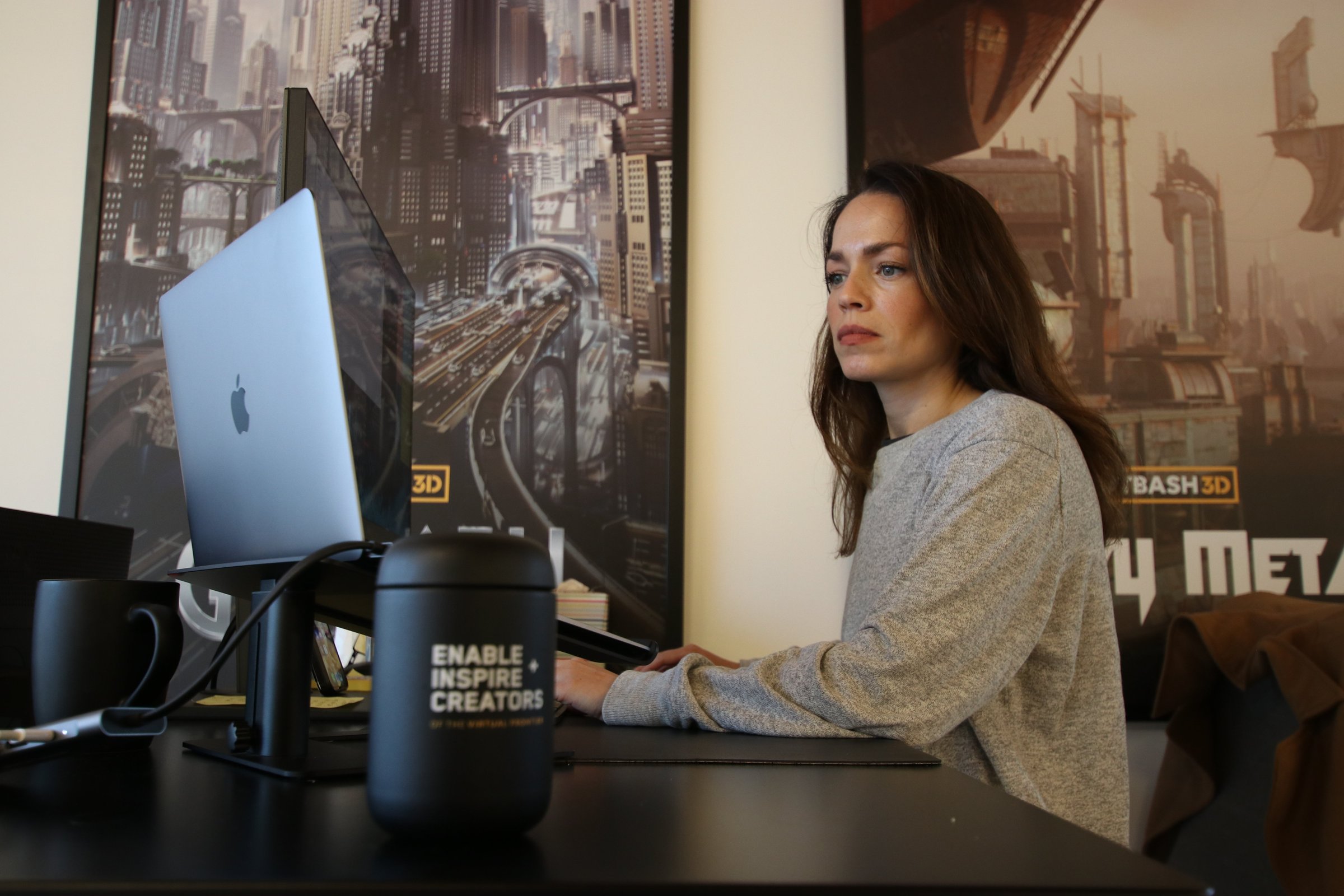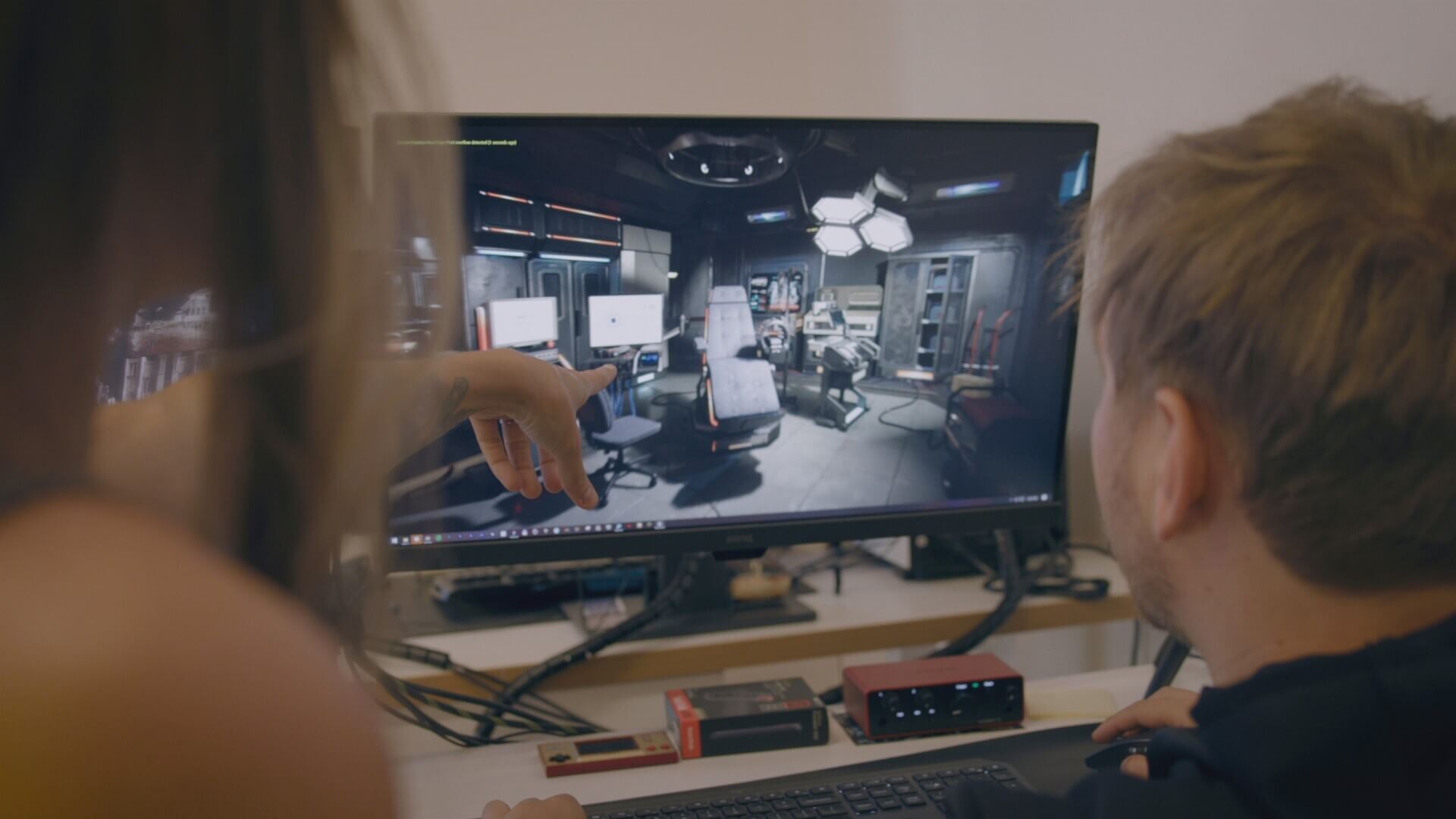Let’s be real—the job market has drastically shifted over the last year. We won’t go over the stats (they’re easy to find if you’re curious), but it’s safe to say it’s more challenging to land a job as a 3D artist now than it used to be. If you’re like us, you enjoy a challenge, but you might also be looking for some extra insight to help on your journey. While this article doesn’t have a magic formula, we hope you find some useful tips to unlock your next level.
You may be wondering - why should I listen to your advice anyway?
A little about us:
My name is Mike Reese and I am the VP of Kits at KitBash3D. I manage the department strategy and the development of Kits. I have a degree in Game Art and Design and have managed and developed production artists for over 14 years. I’ve been on both sides of the hiring equation as a 3D artist earlier in my career and as a hiring manager where I’ve hired numerous 3D artists across different focus areas.
I’m Katie Ferris and I am the Director of People Operations at KitBash3D. I have about 7 years of experience working on different ends of talent acquisition and management. I’ve spent nearly 3 years at KitBash so far (and loving it!) where I’ve helped hire and grow our team of 3D artists.
So, let’s get into it!
Craft Your Strategy
Submitting your resume to as many positions as possible might seem like the best approach, but it can lead to fewer results.
Before applying, take a step back and define your job search strategy. By focusing on what’s important to you, you can target the opportunities that are the best fit and put your energy where it counts.
Ask yourself:
What are your negotiables and non-negotiables? Consider things like title, compensation, industry, remote work options, company culture, or team dynamics.
Where can you be flexible? Are you open to roles in new industries that match your skills? Many industries are increasing their use of 3D such as eLearning, product visualization, industrial design, and fashion/retail.
Visualize your first day at your new job—what stands out as important to you?
Write down your strategy so you can revisit it throughout your search.
Optimize Your Application
Before you hit 'apply,' make sure your application materials are optimized to get noticed. From crafting an ATS-friendly resume to building a focused portfolio, these key steps will ensure your application doesn’t just get submitted—it gets seen.
Resumes
Stylish resumes can showcase your artistic flair, but most recruitment software isn’t built for creative formats. Use simple formatting and text instead. Tailor your resume to the role you’re applying for and include key terms from the job description. After drafting, run your resume through an online applicant tracking system (ATS) checker. While not all companies use automated ATS systems, many do, and this ensures your experience won’t be overlooked.
Cover Letters
Always include a cover letter, even if it’s optional. This is your chance to speak directly to the hiring team. Avoid generic letters, instead talk about your specific experience, strengths, and why you’re a great fit for the role and company. Show your enthusiasm for their brand, products, and culture.
Portfolios
Your portfolio is a crucial part of nearly every application. Keep it up-to-date and focused on skills that are relevant to the roles you’re targeting. If you don’t have a polished personal website, use an industry-standard tool like Artstation. Remove portfolio pieces that don’t fit the narrative you want to present; for example, if you’re applying for an environment artist role, cut unrelated character work.
Ace Assessments and Interviews
Moving on to assessments and interviews is a big step, but preparation can make all the difference. From artistic assessments to interview questions, this is your moment to show your skills and passion while ensuring the role is the right fit for you.
Artistic Assessments
These come in many forms, so read the instructions carefully. If anything’s unclear, don’t hesitate to ask the hiring team. Always aim to showcase your best work in the assessment, and you can often include the finished piece in your portfolio afterward. When we communicate with candidates about artistic assessments at KitBash we welcome questions and feedback, these give us additional insight into what it’d be like to work together. When reviewing artistic assessment submissions one of the first things we evaluate is how well the submission meets the technical requirements and artistic direction provided in the brief.
Interviews
Congratulations on getting the interview! This is your chance to highlight what you can bring to the team.
✓ Research the job description, company website, and relevant materials. Be ready to discuss your experience with examples that demonstrate your strengths, adaptability, teamwork, and values.
✓ Prepare for common questions like “Tell me about a time when…,” and have specific examples ready to showcase your strengths and the impact you've had on projects.
✓ Ready insightful questions for the interview team. Every interview is a 2-way exercise, consider what you need to know to determine if this role and company align with your goals. Tailor your questions to each individual you meet; this not only demonstrates your engagement but also empowers you to make an informed decision about your potential employer.
✓ After the interview, make sure to send a thoughtful follow-up email to express your appreciation for the opportunity. This not only reinforces your interest in the position but also demonstrates professionalism. A simple thank you can leave a lasting impression and keep you top of mind as they make their decision.
Grow Your Skills
As a 3D artist, evolving your skills is crucial to staying competitive in a rapidly advancing industry. Diversifying your skill set not only enhances your work but also signals to employers that you have a growth mindset. This pursuit of continuous learning makes a great talking point in both your cover letter and interviews.
One area to help evolve your skills is with community challenges and contests. Not only can this get you focused on a clear goal, but it can help to build your portfolio, network, and community.
Don’t overlook the importance of soft skills. While it’s easy to focus on sharpening your artistic and technical abilities, soft skills are equally—if not more—important in a professional environment. Teamwork, time management, adaptability, communication, and active listening are all key skills that employers value. Actively developing these skills will not only make you more effective once you land the role but also give you strong examples to highlight during your interviews. Showcasing them is sure to impress any hiring team!
Find Community
Networking can feel overwhelming, even though we all know it provides a significant advantage when job hunting. Instead of focusing on traditional networking, try seeking out genuine community connections.
✓ Start by reconnecting with people you've worked with before, whether through school, freelance projects, personal work, or past jobs. Foster these relationships by seeking advice, feedback, and offering help in return.
✓ Keep your LinkedIn profile up to date so others can easily find and connect with you. Don’t just use it to receive—engage in conversations, share insights, and contribute to the community. The more active you are, the more meaningful connections you'll build.
✓ Join a professional network to broaden your reach.
✓ Be kind, even after rejection—you never know when that connection could reappear in your quest down the road.
Community Resources
There are countless ways to find and build community. Here are some resources to help you get started:
✓ Join The Rookies, Polycount, and the KitBash3D Discord server.
✓ Follow David Tveraas, Kelly Bender, Andy Fidel, and Holli Alvarado on LinkedIn for regular industry news, curated job listings, and good conversations.
✓ Check out this grassroots industry job listing board
✓ The 3D Artist Community run by Michael Tanzillo is a great community to be part of especially if you're interested in learning about 3D opportunities outside of traditional movies and video games.
If you’ve already found your community, fantastic! Lean in, connect with others, and help those who are also searching for a place to dedicate their passion and artistic skills.
Prioritize Your Well-Being
Taking care of your well-being is essential during your job search. As you navigate the ups and downs of finding the right fit, prioritizing your mental health and resilience will keep you grounded while enhancing your creativity and motivation.
Set Boundaries
To avoid burnout, set a schedule for your job search. Make sure to carve out time for activities you enjoy and to stay creative. Prioritize rest and balance to recharge the mental energy a job search requires.
Practice Resilience
Rejection is inevitable, especially in today’s competitive job market. Build resilience by accepting that rejection is part of the process and often beyond your control. Try to find learning opportunities in each setback, and whenever possible, seek constructive feedback.
With these insights and strategies, you’re ready to take on the challenge and land the role that’s right for you. Now it’s time to showcase your skills, build connections, and unlock that next level in your 3D artist career. The journey may not be easy, but you have what it takes to succeed!




